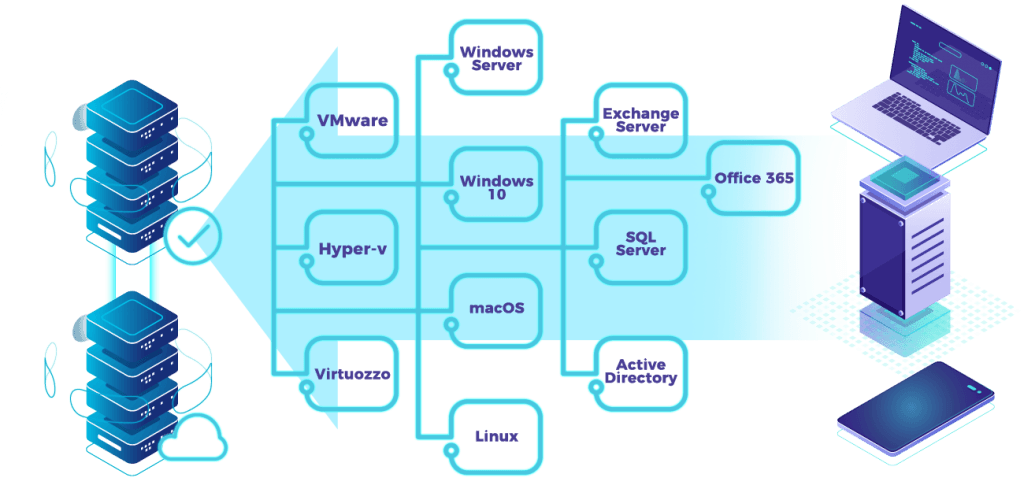Data became increasingly crucial to every business. Poor and unprepared Disaster Recovery Plan could result in irreversible damages to your business, revenue, and even customers’ trust, which have spent years building.
No one could predict when disaster strikes. An effective DR does not necessarily have to be comprehensive. Most importantly, knowing what level of DR suits your business best would help you respond swiftly and recover from the disaster in the shortest time possible.
Here are the four elements that are not to be miss in your Disaster Recovery Planning:
1) Know your threats
History is the best teacher. Identify the potential and past disaster that may hit your business badly. Not to forget Cyberattacks which has been the most common and biggest nightmare in recent year to many industries such as Ransomware.
2) Know your assets
When a disaster hits, you will need to prioritize which functions to restore first. List out critical corporate assets and component that has to be protected or continue to run, for example:
- Critical Systems, Data, Applications, Equipment, and Networks, VPN.
- Determine by essential group functions, which are usually part of the Business Continuity Plan (BCP).
- Consideration of company reputation, potential financial loss, and legal issues.
- Set a clear Recovery Point (RPO) and Recovery Time Objective (RTO) that align with the business demand.
- Cloud hosting server needs to be backed up in order to avoid disaster too. There is always the risk of something going wrong when dealing with technology, although your cloud providers have a specific SLA to ensure your data is backing up. In the end, you own the data.
3) Tertiary Backup
Do not solely depend on local and DR restoration. A serious business should have at least a 3-2-1 backup rule, consisting of one production and two offsites at different mediums, because DR may sometimes fail depending on damages. Some Ransomware attacks can replicate the infections over to your DR. Therefore, DR strategy requires changing from time to time.
Most of the modern backup solutions now come with a certain level of Advanced malware and Ransomware protection. Talk to your providers.
4) Test your Backup and DR
DR test should be performed at least once a year to discover flaws in your disaster recovery plan so you can resolve the configuration to ensure it is recoverable during a disaster. While a regular backup test can verify the health of the data and confirm the latest backup points align with the desired RPO.
Backup and Disaster Recovery with Qloud DRaaS
Qloud Next-Gen Backup delivers reliable backup solutions using the best industry practice and seamless recovery for your data and workloads, regardless of whether they are on-premise, on the cloud, or in your co-location.
The hybrid-cloud backup technology suit most environment that allow the system administrator to manage everything in a single portal with complete visibility and control. Not only that, you will be amazed by the restoration speed even at a high compression level.

Qloud DRaaS also has many advanced security features, including malware protection to secure backup your data, VMs, and replicates via end-to-end encryption.
Visit us at https://www.qloud.my/backup-and-disaster-recovery/ to know more.


